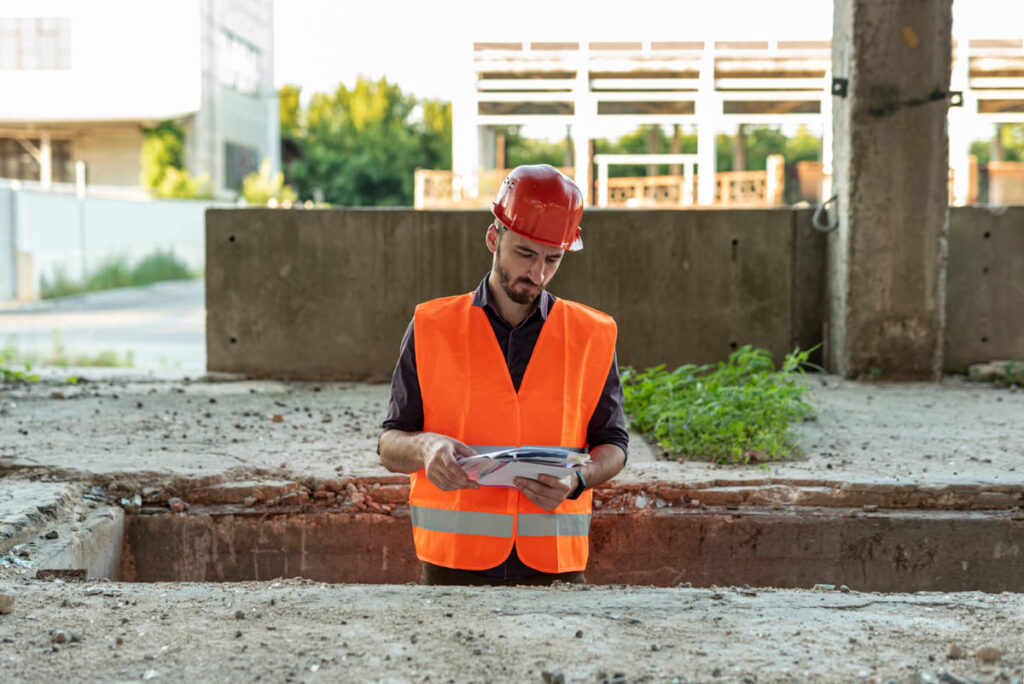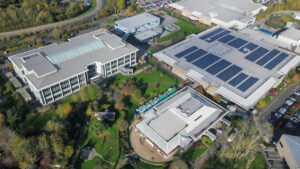Modern concrete construction demands careful monitoring of curing and strength to ensure quality and safety. When concrete is left to cure without adequate oversight, problems can arise – from structural failures to costly delays. This article explores the common challenges in managing concrete curing and quality on construction sites, and how 5 common types of concrete sensors provide effective solutions. These sensors range from wireless devices that track concrete maturity and temperature to embedded probes and crack monitors, each playing a unique role in modern projects.
Table of Contents
Problems and Consequences
Large and small construction sites alike face recurring issues with concrete curing and quality control. Understanding these problems and their consequences is the first step toward safer, more efficient construction practices.
1. Premature Formwork Removal
Removing formwork (molds and supports) too early is a frequent risk. If concrete hasn’t gained enough strength, the structure may not support its own weight or applied loads. The result can be sagging, cracks, or even a partial collapse. In one case, a high-rise project suffered deflections in young concrete after forms were stripped ahead of schedule, compromising long-term integrity. The consequence of premature removal is twofold: structural weakness (potential failure or extensive cracking) and project setbacks, as any damage must be repaired at significant cost. Without measurements of in-place strength, crews might either strip forms too soon (risking collapse) or wait longer than necessary (delaying the project). Both scenarios hurt productivity and safety.
2. Uneven Curing and Temperature Variations
Concrete in a large pour does not cure uniformly. Thick structural elements like mat foundations or bridge piers often develop hot spots in the core and cooler zones at the surface. These temperature differentials lead to uneven curing rates and internal stresses. If unmonitored, a mass concrete pour can exceed safe temperature limits unknowingly. For example, industry guidelines (e.g. ACI 318) limit the core temperature (around 70°C) and the core-to-surface difference (about 20°C) to prevent thermal cracking.
In practice, without monitoring, different parts of a structure may cure at different speeds – some areas become weaker or crack while others are sound. Such hidden flaws can shorten a structure’s lifespan or require costly repairs (e.g. repairing internal thermal cracks in a bridge pier). Uneven curing also means some sections reach required strength later than others, creating weak links if undetected.
3. Scheduling Delays
Traditional concrete curing and testing methods can slow down construction progress. Often, crews must wait a fixed number of days (or weeks) for concrete to reach a presumed strength before proceeding with next steps like removing forms, stressing tendons, or loading the structure. This practice usually relies on casting sample cylinders and breaking them in a lab at set intervals (e.g. 7 and 28 days). Relying on fixed timelines rather than the actual in-situ strength leads to built-in waiting periods and sometimes unnecessary delays. For instance, lab-cured samples might indicate lower strength than what the in-place concrete has actually achieved (due to different curing conditions), causing project managers to err on the side of caution and wait longer.
Such delays can cascade through the schedule, pushing back subsequent trades and increasing costs for equipment rentals and idle labor. In smaller projects, these delays might simply waste time, while in large projects they can trigger contractual penalties for late completion. In short, lack of real-time data often forces teams to choose between playing it safe with generous cure times or risking progress without proof of strength.
4. Structural Failures Risk
If concrete strength development is uncertain, there is a real structural risk. Loading a slab or removing shoring before the concrete reaches its design strength can lead to catastrophic failure. Unfortunately, construction history has examples: investigations into some structural collapses (such as a 2019 hotel formwork collapse in New Orleans and a 2018 pedestrian bridge failure in Florida) found inadequate concrete strength or curing as contributing factors.
Even without headline-making failures, insufficient curing or curing under improper conditions means the concrete may never achieve its intended strength or durability. The consequences include reduced load capacity, excessive deflections, and early onset of cracks or steel corrosion in the hardened structure. In essence, uncertainty about concrete strength is a liability – to ensure safety, engineers might over-compensate (overdesigning or adding extra days to the schedule), and if they underestimate, the structure’s stability is at stake. Both outcomes are undesirable.
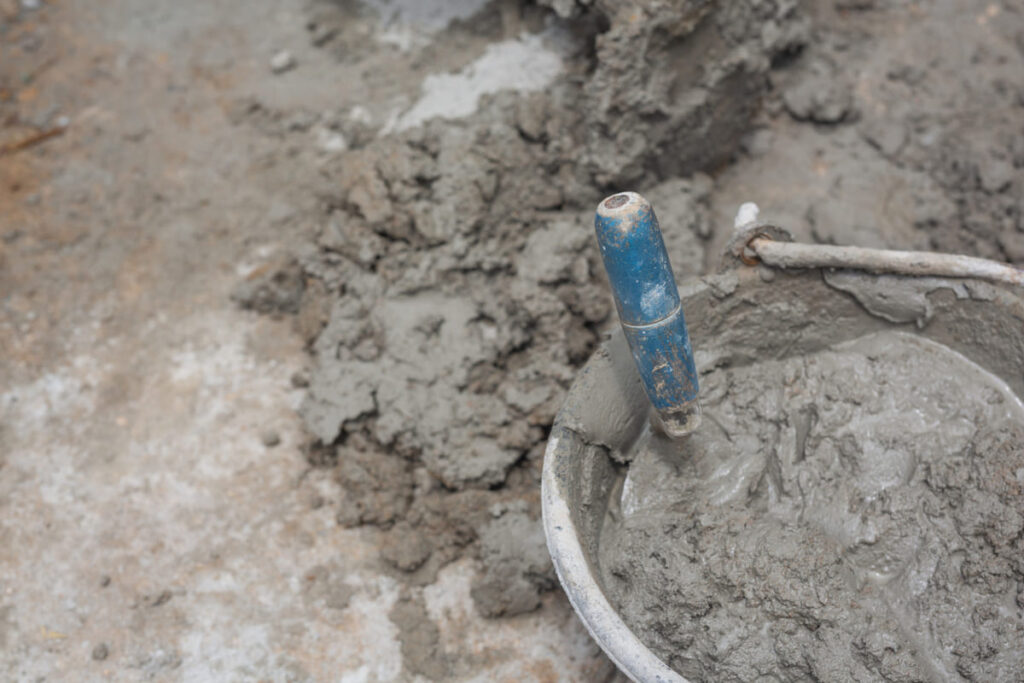
5. Limited Visibility into Curing Progress
One of the fundamental challenges is that concrete’s curing and strength gain are invisible processes. Project teams traditionally have limited real-time insight into what is happening inside the mix once it’s poured. They may rely on one-time test results or assume the concrete is following a typical strength curve. In reality, many factors (weather changes, mix variations, improper curing techniques) can alter the rate of strength gain.
Without continuous monitoring, concrete curing is essentially a “black box” – issues often remain hidden until they manifest as visible cracks or a failed strength test. For example, if an unexpected cold front slows curing, the team might only discover the low strength days later during a scheduled test, causing a sudden work stoppage.
Conversely, if concrete gains strength faster due to favorable conditions, crews wouldn’t know and could waste time waiting longer than necessary. This lack of visibility leads to reactive decisions instead of proactive ones. To maintain safety without data, managers add large safety buffers to schedules, further delaying progress, or they proceed with blind assumptions, risking quality. On complex sites with many pours, the inability to track each element’s curing in real time makes it difficult to coordinate and optimize the overall project timeline. In summary, limited insight into curing can result in both quality issues (like undetected overheating or drying within the concrete) and inefficiencies in construction sequencing.
Suggested article to read: Building Sensors; Everything You Need to Know in 2024
Solutions with Sensors
Concrete sensor technologies directly address these challenges by providing timely, in-situ data on concrete’s condition. By embedding sensors in the concrete or attaching them to formwork, and using wireless systems to retrieve data, construction teams can replace guesswork and fixed schedules with informed, real-time decisions. Below, we discuss five common types of concrete sensors and how they help solve the problems outlined above. These range from modern wireless, IoT-enabled devices to traditional wired probes. For each type, we explain how it works, its advantages, and examples of practical use in projects around the world.
1. Wireless Maturity Sensors
Working Principle: Wireless maturity sensors measure the temperature history of concrete to calculate its maturity, which correlates with strength gain. They are small devices (often embedded at the time of pour and affixed to rebar) that log concrete temperature over time and use the maturity method (ASTM C1074) to estimate in-place strength. These sensors typically transmit data wirelessly (via Bluetooth or cellular) to a mobile app or cloud platform. As a result, engineers can see the real-time strength development of the concrete without having to break test specimens. Most wireless maturity sensors are battery-powered and stay in the concrete, eliminating the need to retrieve them later.
Advantages: The key advantage is real-time strength monitoring. Instead of waiting for lab-cured cylinders, the site team knows exactly when a element (column, slab, etc.) reaches the required strength for the next construction step. This helps prevent both premature formwork removal and unnecessary delays. For example, a major UK contractor (Costain) deployed wireless maturity sensors on multiple projects, allowing engineers to track concrete strength on a cloud dashboard and make faster decisions on formwork removal without sacrificing safety.
On one project, having immediate strength data enabled the team to strike formwork 14 days earlier than scheduled, since sensors confirmed the concrete had achieved its target strength safely. These sensors also improve quality control – any abnormal curing behavior (if the mix is setting too slowly or quickly) is caught early, so adjustments can be made before a failure occurs.
Practical Application: Wireless maturity sensors are used in high-rise buildings, bridge construction, and pavement projects to optimize construction sequences. For instance, in a highway pavement job in Ontario, Canada, embedded maturity sensors were used to determine when to open repaired lanes to traffic. The sensors sent real-time strength results to the engineers, who were notified within an hour that the concrete reached the required strength, enabling significantly faster reopening. Previously, the team had to cast cylinders and send them to a lab 100 km away, waiting for results before opening the road. By using maturity sensors, they eliminated that wait and opened the roadway as soon as strength was sufficient – without compromising safety.
On a commercial building in Texas, maturity data showed that post-tensioning cables could be stressed in just 33 hours, far earlier than the several days indicated by traditional lab-cured cylinders. These examples show how wireless maturity sensors directly tackle scheduling delays and structural safety: crews get the green light for next steps as soon as the concrete is ready, and they have confidence that the required strength is actually achieved. Many modern construction projects now embed these sensors in every significant pour to track strength gain continuously.
2. Wireless Temperature and Humidity Sensors
Working Principle: Temperature and humidity sensors monitor the curing environment of concrete. Wireless temperature sensors are often embedded in the concrete (or attached to formwork surfaces) to log internal concrete temperature, ambient temperature, or both. Wireless humidity sensors can measure the relative humidity inside concrete (indicating moisture levels during curing) or the ambient humidity around the concrete.
These devices are usually IoT-enabled, sending data periodically to a central system. By tracking temperature, they ensure the concrete does not get too hot (which can cause thermal cracking) or too cold (which can halt strength gain or cause freeze damage). Monitoring internal humidity is useful for specialized cases like high-performance slabs or industrial floors, where knowing when the concrete has dried sufficiently is important (e.g. before applying floor finishes). Many modern wireless systems combine temperature and humidity in one sensor node for comprehensive curing data.
Advantages: The primary advantage is preventing curing problems through early detection. Temperature sensors help maintain optimal curing conditions by alerting the team if the concrete’s core is overheating or if there’s a risk of thermal shock. For example, in massive pours, continuous temperature monitoring allows contractors to initiate cooling (using chillers or cooling pipes) or insulation adjustments if the core temperature approaches critical levels.
This was demonstrated in a 19-story building’s raft foundation in India, where ten thermal sensors were embedded at various depths of the concrete. The sensors recorded that the maximum temperature and the top-to-core difference stayed within safe limits (about 65.5°C max and 14.4°C differential, below the 70/20°C thresholds), thus avoiding thermal cracking. By catching temperature spikes early, the team prevented internal stress and uneven curing issues. Likewise, in cold-weather concreting, wireless thermometers can signal when concrete temperature drops near freezing, so heaters or insulating blankets can be applied promptly.
Humidity monitoring ensures the concrete isn’t drying out too quickly. Adequate moisture is crucial in the first days of curing to achieve full strength. If sensors detect low internal humidity, it prompts the crew to improve curing measures (like misting or covering with wet burlap) to prevent surface cracking. Overall, wireless T & H sensors give a full picture of curing conditions, which improves quality and durability of the concrete. According to manufacturers, such sensors help ensure concrete is cured properly and thus “prevent cracking and other problems that can compromise integrity”. They also feed data to maturity or strength models – since concrete strength development is temperature-sensitive, having the exact temperature profile yields more accurate strength predictions.
Practical Application: These sensors are standard in mass concrete projects (dams, bridge piers, large foundations). For instance, on a bridge project in New York City, engineers used RFID-based wireless temperature tags embedded in the concrete of the Freedom Tower (One World Trade Center) to monitor curing. The system provided temperature data from within the pours, which was used to calculate maturity and ensure the concrete achieved optimum strength without overheating.
In everyday construction, a wireless temperature sensor might be placed in a thick floor slab to check that the center of the slab doesn’t exceed safe heat levels, while another sensor monitors the surface temperature. By comparing the two, the team can verify the temperature differential stays within specified limits and adjust curing protocols if needed. On residential jobs or smaller pours, simple wireless thermometers are used to make sure cold weather doesn’t stall the curing – the sensor can send an alert to a superintendent’s phone if the concrete temperature falls below a threshold at night, prompting action.
Wireless temperature and humidity sensors are often used in conjunction with maturity sensors. Many commercial systems include a temperature probe (either embedded or connected via a wire) that feeds data to a wireless transmitter on the surface. This approach combines the reliability of a wired temperature reading with the convenience of wireless data logging. In summary, wireless T & H sensors address issues of uneven curing and limited visibility by making the concrete’s internal condition transparent. They enable proactive curing management: contractors can avoid thermal cracking by controlling temperature gradients and ensure proper moisture for curing – leading to uniformly strong, durable concrete.
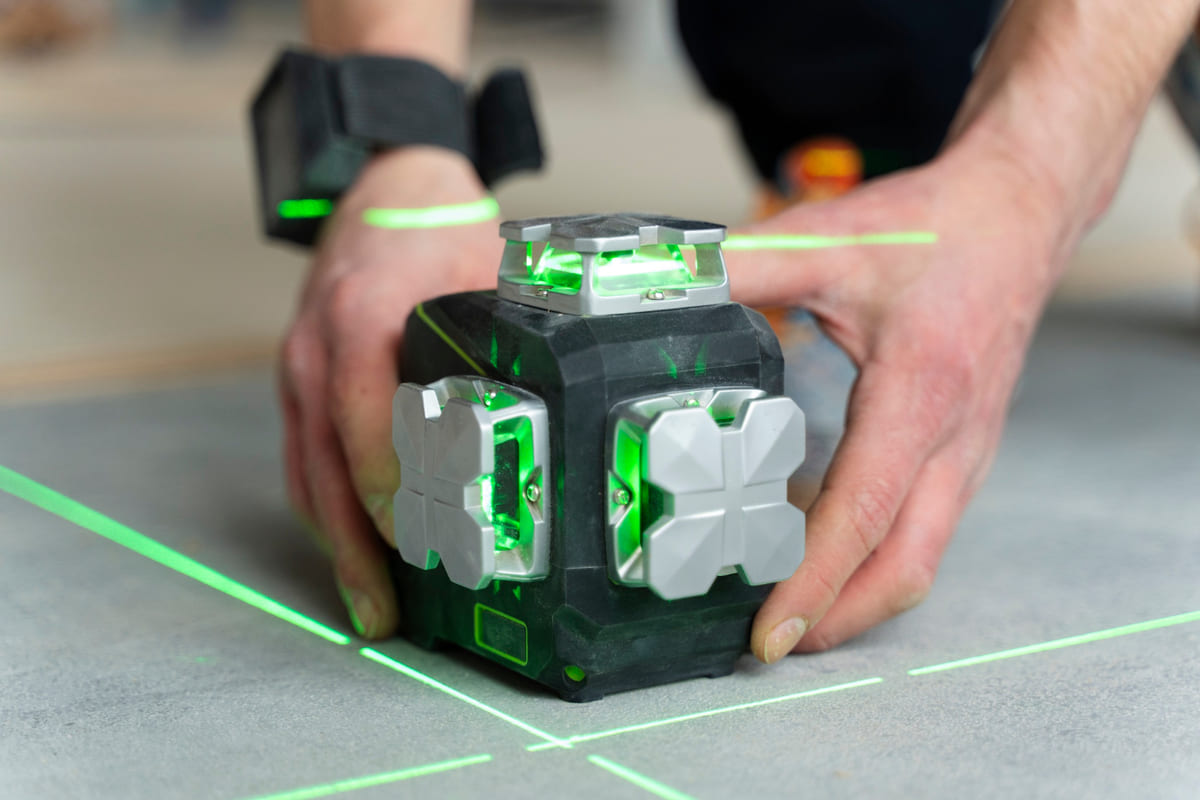
3. Embedded Wired Temperature Probes
Working Principle: Before wireless tech became prevalent, the traditional way to monitor concrete temperature was with embedded wired probes. These are typically thermocouple wires or thermistor sensors placed inside the formwork prior to pouring concrete. The wires run out to a data logger or handheld device where readings can be taken.
As the concrete cures, the thermocouple measures its internal temperature profile. Wired probes provide accurate point measurements of temperature and can be left in place through the curing period. They do not transmit data on their own (no built-in wireless capability), so someone must either periodically connect a reader or use a connected data logger to record the temperatures over time. Despite the inconvenience of wires, this method has been used for decades and is still common for critical pours.
Advantages: The biggest advantage of wired temperature probes is their proven reliability and simplicity. Thermocouple sensors are inexpensive and very accurate for temperature readings. They don’t require batteries or wireless signals, which means there is little risk of data loss due to power failure or signal interference.
Many construction teams are familiar with this method – for example, using a handheld thermometer to check a wire embedded in a curing concrete column. These probes can tell you the core temperature throughout the curing process, allowing engineers to ensure it stays within specified ranges. In mass concrete, multiple wired sensors at different depths (top, middle, bottom of a pour) provide a detailed thermal profile. This data is crucial for complying with thermal control plans on projects like large foundations or dam construction.
Another advantage is that no complex setup is needed: a technician can simply install the sensor and later retrieve the data. Some wired sensors, like iButton data loggers, can even be embedded and left in the concrete; they record temperature at set intervals and can be extracted later to download the complete temperature history. These have long battery life and are quite rugged and low-cost. In short, wired probes offer a straightforward way to monitor curing for those who do not require real-time remote access.
Practical Application: Embedded wired temperature probes are used in projects where continuous monitoring is needed but high-end wireless systems may not be available or necessary. For example, on a small bridge pour, an engineer might embed a few thermocouple wires and periodically check a handheld reader to ensure the concrete isn’t overheating. In large-scale use, a notable case is the Hoover Dam and many subsequent dam projects, where arrays of thermocouples were placed in the concrete to monitor the heat of hydration over weeks (these early projects laid the groundwork for today’s mass concrete thermal control practices). In modern practice, companies often use a hybrid approach: wired sensors with wireless transmitters.
A system may consist of disposable thermocouple cables cast into the concrete, all plugged into a reusable wireless node mounted on the formwork. This node sends the temperature data to the cloud. Such systems (offered by several vendors) combine the reliability of wired readings with the remote-access benefit of wireless. Overall, wired temperature probes address the same issues of thermal control and quality assurance, though they do so in a less automated way than fully wireless sensors. They are a good fallback or complement to wireless networks, ensuring that concrete temperature data is captured for every critical pour.
4. Wireless Strength Monitoring Sensors
Working Principle: Wireless strength monitoring sensors refer to devices that directly or indirectly measure the developing strength or stiffness of concrete in real time. In practice, most of these systems use the maturity concept described earlier to infer strength from temperature. Therefore, many wireless maturity sensors double as “strength sensors.” However, there are also innovative approaches under this category, such as sensors that use ultrasonic pulses or electrical signals to gauge concrete stiffness continuously.
For instance, researchers have developed embedded ultrasonic transducers that emit sound waves through the concrete and track changes in wave speed, which correlates with strength gain. Some commercial wireless sensors also measure concrete’s electrical conductivity, since it changes as the concrete cures and can be correlated to setting and early strength. Regardless of the method, the goal is to provide a direct indication of strength (compressive strength or a related parameter like modulus) to the construction team electronically, without having to physically test a sample.
Advantages: The advantage of these sensors is evident: they give builders confidence about when the concrete can bear loads. By continuously monitoring strength, crews can safely accelerate construction activities (like post-tensioning, formwork removal, or applying structural loads) as soon as the concrete is ready, avoiding the guesswork. This type of sensor effectively mitigates the structural failure risk by ensuring that under-strength concrete is not put into service. As noted, most wireless strength monitoring in the field is done via maturity sensors, which have well-documented success.
For example, using maturity-based strength data, a construction team in London was able to strip formwork significantly earlier than planned, with sensors confirming the required strength had been reached. In Texas, maturity sensors (a form of strength monitoring) showed that a slab reached the needed strength in 33 hours, whereas the traditional cylinder tests suggested a much longer wait. In both cases, the sensors provided a more accurate reflection of in-situ concrete behavior, enabling faster yet safe progress.
Another benefit is reduced reliance on laboratory tests. With reliable strength data from sensors, projects can minimize the number of test cylinders or cubes cast. One project reported by Costain eliminated the need for approximately 500 test cubes by using sensor data instead. Fewer lab tests mean less variability and delay, and it also reduces waste (since test cylinders are essentially wasted concrete). Wireless strength sensors also often have alert features – for instance, the system can notify the team the moment a strength threshold (say 20 MPa or 3000 psi) is achieved, which is more precise than estimated timelines.
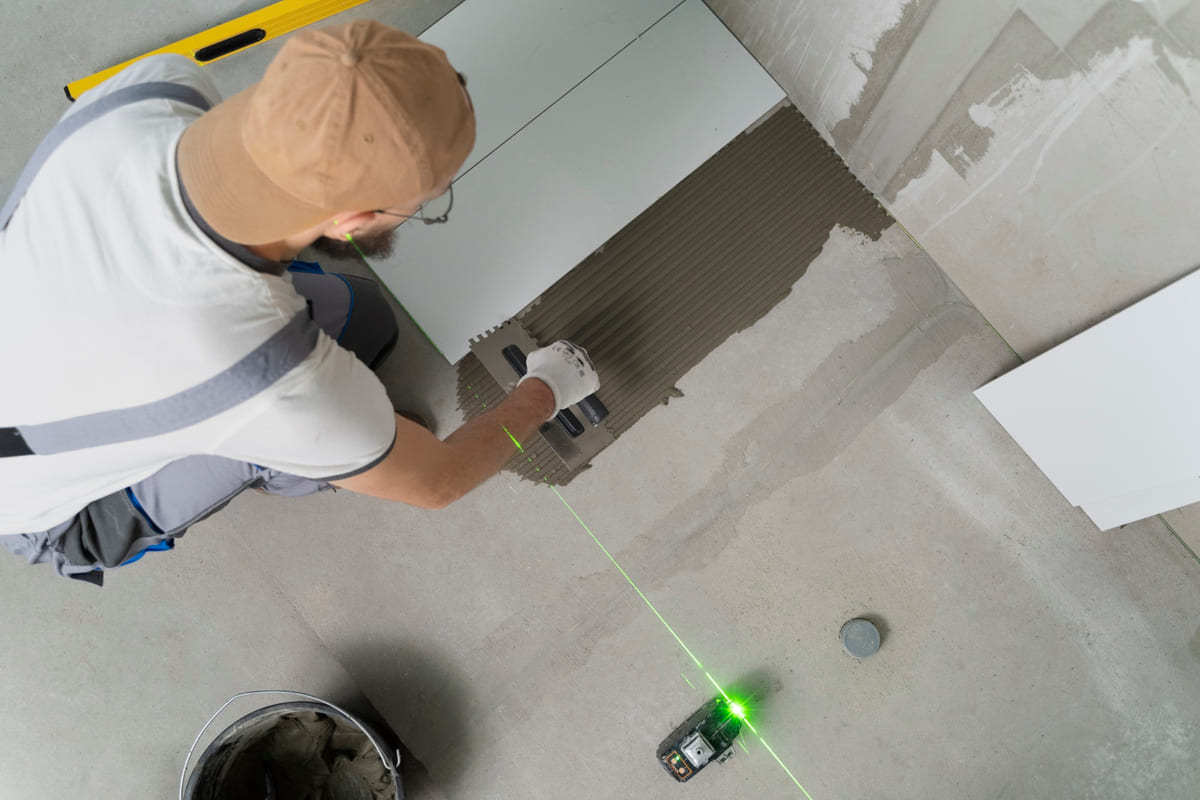
Practical Application: Wireless strength monitoring is used in fast-track construction projects and critical structural operations. In high-rise construction with very tight floor cycles, contractors embed sensors in columns and walls to know exactly when they can proceed with the next floor. This has allowed some builders to reuse formwork sooner and move the climbing form systems at a faster rate, shaving days off each cycle. In bridge construction, strength sensors are used to determine when precast segments or cast-in-place sections can have prestressing force applied or be moved.
For concrete pavement repairs on highways, maturity/strength sensors are placed so that traffic can be allowed back on as soon as the concrete reaches the specified strength (this can mean opening a road hours earlier than normal, minimizing traffic disruption). It’s worth noting that “strength sensors” in practice usually involve a combination of a sensor and a software model (maturity curve or other calibration). Thus, proper mix calibration and sensor placement are critical for accuracy.
Nonetheless, real-world case studies have documented substantial schedule gains. For example, Costain reported that using concrete strength sensors reduced formwork striking times by about 33% on average across several projects. By cutting one-third of the waiting time, they accelerated project delivery while maintaining safety. These sensors are increasingly seen as essential tools in projects where time is money, providing the data needed to compress schedules responsibly.
5. Crack and Stress Sensors for Hardened Concrete
Working Principle: Even after concrete has fully cured and construction is complete, monitoring the structure’s health is important. Crack and stress sensors are devices used to observe the performance of hardened concrete under loads and over its service life. These include strain gauges, which measure deformation (strain) of concrete; crack width gauges or crack detectors, which alert if a crack opens beyond a certain threshold; and vibration or acoustic sensors that can detect cracking events or excessive stress. One common type is the vibrating wire strain gauge embedded in concrete – as the concrete stretches or compresses, the sensor records the strain, indicating stress levels in the element.
Another cutting-edge technology is fiber optic sensing: hair-thin optical fibers are run through or on a concrete element, and they can measure strain distribution continuously along their length. This provides a detailed picture of how the concrete is behaving and can pinpoint the initiation of cracks by detecting localized strain changes. Acoustic emission sensors, on the other hand, “listen” for the high-frequency sound of cracks forming in concrete; they can be attached to a structure to warn of cracking or spalling. These sensors are typically part of a structural health monitoring (SHM) system, collecting data over months or years.
Advantages: Crack and stress sensors offer the benefit of early warning and performance verification. They help answer questions like: Is a bridge beam carrying more stress than it was designed for? Is a foundation developing any cracks over time? By embedding strain sensors during construction, engineers can monitor how a building or bridge responds to real loads (traffic, wind, seismic events, etc.). For instance, strain sensors embedded in concrete can show if a beam is deflecting excessively under load, or if there’s any abnormal movement.
These sensors enable continuous monitoring as opposed to periodic visual inspections, meaning issues are caught in real time. If a crack begins to form inside a critical wall, a distributed fiber optic system might detect the slight strain concentration at the crack tip long before the crack becomes visible on the surface.
This allows for preventative maintenance – the owner can reinforce or repair the area while the crack is small, rather than after it has grown large and dangerous. In bridges, this technology is a game-changer for safety: high-definition fiber optic strain sensing has been shown to identify crack initiation in concrete bridges well before they become major issues.
The advantages include precise localization of problems (knowing exactly where in a structure the stress is high or a crack is forming) and verification of design assumptions (confirming that loads are distributed as expected and that the structure has the intended factor of safety). This leads to extended service life and improved safety because maintenance can be targeted effectively. Additionally, long-term data from stress sensors can inform future design improvements.

Practical Application: Many modern infrastructure projects implement crack and stress sensors as part of their smart monitoring systems. For example, some highway bridges in Germany have been built with embedded fiber optic strain sensors and crack detectors, effectively creating “smart bridges” that can report on their own health. In one case, sensors (called EpsilonRebar, a type of fiber optic sensor) were embedded in a concrete bridge slab—this was the second bridge in Germany to use such technology, marking a new era of infrastructure monitoring.
Likewise, in high-rise buildings in seismic regions, engineers often cast vibrating wire gauges in key shear walls or columns to monitor any long-term strain or shortening of concrete under load. After an earthquake or heavy windstorm, data from these sensors can reveal if the structure experienced any yielding or permanent deformation. Crack sensors are also used in critical concrete structures like nuclear containment buildings and dams. These structures are not easily accessible for inspection, so having embedded sensors to continuously check for cracks or unusual strain provides confidence in their integrity.
On a smaller scale, there are even wireless crack monitors that can be epoxied into an existing crack on a concrete surface; they will log if the crack widens over time due to load or environmental effects, sending an alert if it exceeds a set limit. This is useful in monitoring known hairline cracks in parking garages or heritage structures, for instance. Strain sensors embedded in concrete during construction were highlighted by the DEWALT engineering team as tools that “provide data on structural behavior and load distribution”. This means that by reading the strain values, engineers can tell how different parts of a structure share the load – valuable information for validating structural models and ensuring safety margins are maintained.
In summary, crack and stress sensors in hardened concrete tackle the issues of structural uncertainty and long-term durability. They ensure that even after the curing phase, the concrete structure remains a known quantity rather than a black box. If any part of the structure begins to behave abnormally (e.g. a section taking more stress or a crack forming), these sensors bring it to attention immediately. This proactive approach prevents minor issues from growing into major failures and helps infrastructure owners maintain their assets more efficiently.
FAQs
How do different types of concrete sensors ensure concrete quality during curing?
Each type of concrete sensor contributes to quality control by monitoring specific aspects of the curing process. Temperature sensors ensure the concrete remains within safe temperature ranges, preventing thermal cracks and strength loss. Humidity sensors confirm that moisture levels are sufficient for proper curing, avoiding premature drying that can cause surface cracks. Maturity and strength sensors directly track strength gain, so the concrete isn’t loaded or stripped of formwork before it’s ready.
By providing real-time data on these parameters, the various sensors allow engineers to adjust curing methods (e.g. applying heat, cooling, or moisture) and timing of construction activities to optimize concrete quality. In short, they turn curing from a passive process into an actively managed one, ensuring the concrete develops the desired strength and durability.
What problems do types of concrete sensors help solve on construction sites?
Concrete sensors address several common problems on construction sites. They prevent premature formwork removal by verifying in-place strength, which avoids structural damage or failure. They mitigate uneven curing issues by monitoring temperature differentials and ensuring all parts of a large pour cure uniformly. Sensors also reduce scheduling delays – by knowing the concrete’s status in real time, project teams can shorten wait times and move to the next construction stage as soon as conditions allow.
Additionally, sensors eliminate the limited visibility into curing by providing continuous data from inside the concrete (often called turning the “black box” of curing into a transparent process). Overall, using different types of concrete sensors helps solve problems like guesswork in determining strength, undetected curing problems, and inefficient timing of construction operations.
Which types of concrete sensors are best for monitoring concrete strength in real time?
For real-time strength monitoring, wireless maturity sensors are the most widely used type. They measure temperature and use the maturity method to continuously estimate concrete strength on-site. These sensors have proven effective in indicating when concrete elements reach target strength (for example, to safely remove forms or stress post-tension tendons). In addition to maturity sensors, some projects use embedded ultrasonic sensors or electrical resistivity sensors that also correlate to strength development, but these are less common in everyday construction. It’s worth noting that temperature-based maturity sensors are popular because they are relatively easy to deploy and are backed by ASTM standards for strength estimation.
Many modern wireless concrete sensor systems include a maturity function precisely for real-time strength tracking. For long-term structural health (after curing), strain gauges or fiber optic sensors can monitor changes in structural strain, which indirectly reflects if the concrete is carrying loads as expected (though these are more about structural performance than early-age strength). In summary, if the goal is to see strength gain live during the curing period, wireless maturity sensors (a type of strength sensor) are the go-to solution on most job sites.
Is it true that using types of concrete sensors can replace traditional concrete testing?
It is partly true – concrete sensors can greatly reduce the reliance on traditional lab tests, but they don’t eliminate testing entirely. In practice, many projects that use maturity or temperature sensors still cast a few control cylinders for calibration and verification. However, the data from types of concrete sensors often allows teams to cut down the number of test specimens and frequency of lab tests. For example, instead of waiting for a 28-day cylinder break to confirm final strength, a maturity sensor can show that the in-situ concrete has reached the required strength earlier, letting the project proceed sooner.
Many building codes and specifications accept sensor-based data (like maturity method results) as a basis for decisions, provided they are calibrated to the mix. So, on a fast-track project, sensors might replace dozens of test cubes and enable formwork removal based on sensor readings. Field experience (such as Costain’s projects in the UK) has demonstrated that hundreds of lab tests can be avoided by using sensors with no loss of quality control. That said, it’s good practice to have some traditional tests as a backup or for final verification. In summary, concrete sensors can serve as a reliable substitute for many routine tests, especially for monitoring early-age strength and temperature, thereby streamlining the testing process on site.
Conclusion
In modern construction, concrete sensors have moved from experimental gadgets to essential tools for quality control and project management. By addressing long-standing problems – from the risks of premature formwork removal and uneven curing to the inefficiencies of blind scheduling – these sensors make the once hidden process of concrete curing transparent and manageable. We saw through global examples that real-time monitoring of concrete conditions leads to improved safety (no guessing about strength), better quality (proper curing and early issue detection), faster schedules (optimizing formwork cycling and opening times), and more economical use of resources.
Whether it’s knowing the exact moment a foundation reaches sufficient strength, ensuring a massive pour cools evenly to prevent cracks, or tracking the health of a bridge over years, the types of concrete sensors discussed here deliver actionable data. Construction teams can now make data-driven decisions at each step of the concrete lifecycle. Embracing these technologies ultimately means structures that are not only built faster, but built right – with verification of their integrity at every stage.
Resources:
- Forming America. (2024). The Risks of Removing Concrete Forms Too Early.
- Costain. (2024). Costain’s use of concrete sensors reduces formwork striking times by a third (Press release, 28 March 2024).
- Giatec Scientific Inc. (2021). Tomlinson Ready Mix Case Study: Optimizing Project Scheduling for Concrete Pavement.
- DEWALT. (2023). Sensor Types and What Concrete Construction Contractors Need to Know.
- Converge. (2024). Mastering Mass Concrete Pours: The Role of Smart Sensors and Monitoring.
- Luna Innovations. (2023). Enhancing Bridge Safety: High-Definition Fiber Optic Strain Sensing for Early Crack Detection.
For all the pictures: Freepik
Suggested article for reading:
4 Key Applications of Fire Detection Sensors Across the Construction Industry
Top 5 Types of Fire Detection Sensors for 2025: Enhancing Safety with Smart Technology
6 Smart Ways to Integrate Biophilic Design into Sustainable Homes
7 Iconic Modern Architecture Projects That Redefined Urban Landscape
8 Reasons Why Concrete Sensors Are Essential for Modern Construction

